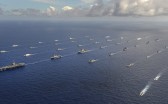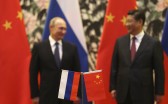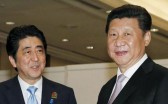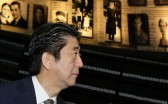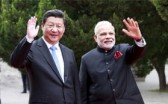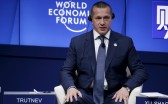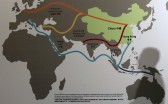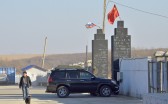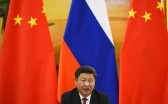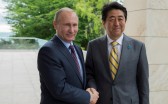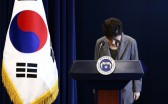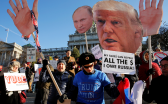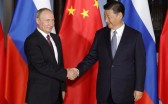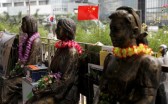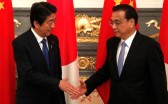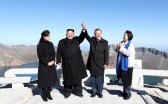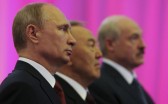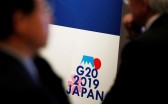Months have passed since the Pyongyang summit—and hopes for a diplomatic breakthrough remain illusory. For a brief moment, the stalled diplomacy between Washington and Pyongyang appeared to recover; yet no date has been fixed for a second Trump-Kim summit and the newly-appointed US envoy Stephen Biegun has yet to set foot in North Korea. The deadlock is unsurprising given the profound differences in US and North Korean positions on how diplomacy should proceed. Despite this—and the various reasons for pessimism about the trajectory of nuclear diplomacy with which I concur strongly—my objective in this exchange is to identify what, if any, signs for optimism remain.
Some qualifications are necessary. This commentary is not a “positive” account in the sense that I argue Kim is sincere about his willingness to denuclearize—I believe this is, in fact, unlikely. Neither do I contend that Moon is able to fundamentally change the course of the US-DPRK relations—this too is improbable. Furthermore, this commentary makes no assumptions about what is the “right” strategy to deal with Pyongyang—this warrants a separate, much lengthier discussion. Instead, this commentary sets aside the broader debates about the viability of denuclearization and peace regime on the Korean Peninsula. As Kathryn Botto rightly notes in the first round of our exchange, such aims lie far beyond Moon’s control.
Bearing in mind these qualifications, this commentary focuses on what opportunities still exist for Moon to sustain his nordpolitik and facilitate the dialogue between Washington and Pyongyang in the immediate term. To that end, I discuss the current state of diplomacy, respond to some salient points raised by Botto, and argue why diplomacy is likely to continue for the foreseeable future.
What is the current state of diplomacy?
Since the Pyongyang summit, inter-Korean relations have remained mostly constructive. Of the 13 commitments with specific deadlines, the two Koreas have successfully delivered on five and are on track to complete four more.1 In particular, both countries completed an 18-day survey of the North Korean railways in preparation for a joint railway project. Despite initial objections by the United States, the survey was approved by the UN Security Council sanctions committee, which—according to the Moon administration—implied “that the project… garnered recognition and support from the United States and the international society.”2 As part of tension reduction measures, the two Koreas also withdrew firearms and troops from guard posts, cleared some hundred landmines in the Joint Security Area, suspended military exercises along the border, and established no-fly zones.3 Symbolically, the two Koreas exchanged tangerines with pine mushrooms and a pair of indigenous dogs.4 However innocuous these measures might seem, that both parties have continued to show reciprocity signifies their commitment to maintaining diplomatic momentum.
In contrast, US relations with the two Koreas have been less productive and, in some ways, conflictual. Following the Pyongyang summit, the United States established a working group with South Korea toward a “shared goal of the final, fully verified denuclearization of the DPRK.”5 It has convened twice so far, in Washington on November 20 and in Seoul a month later.6 South Korean foreign minister Kang Kyung-wha had earlier admitted that there were “differences” between Washington and Seoul on inter-Korean projects.7 Against this backdrop, the working group was seen as an effort to formalize the processes by which the two allies could share information and coordinate policy, particularly with respect to the South’s compliance with the US-led sanctions regime.8 The North Korean state media Uriminzokkiri swiftly denounced the working group as a US attempt to “ruin” inter-Korean cooperation and accused Seoul of “blindly obeying” Washington.9
Tensions between the United States and North Korea has been slowly mounting. On December 10, the US Treasury Department announced additional sanctions against three North Korean officials in honor of Otto Warmbier, an American student who died shortly after his release from North Korean detention.10 Among the sanctioned individuals was Choe Ryong-hae, widely considered North Korea’s second-in-command and responsible for the party’s powerful Organization and Guidance Department. In a pointed response, the director of the Institute of American Studies (IFAS)—a research arm of the North Korean foreign ministry—warned that escalating sanctions and human rights campaign against North Korea would “block the path to denuclearization on the Korean Peninsula forever—a result desired by no one.”11 The warning appears to have been heeded: Vice President Mike Pence reportedly canceled a speech on North Korea’s human rights abuses for fear of further alienating Pyongyang and derailing talks.12
Will diplomacy survive?
Amid growing friction, many—including Botto—have raised doubts about the sustainability of inter-Korean engagement. While I share those concerns, my aim here is to consider why, in spite of these challenges, diplomacy might survive. Based on more recent evidence, I make three points: (1) North Korea continues to signal its desire for dialogue; (2) the United States appears to be demonstrating more flexibility with respect to its “maximum pressure” campaign; and (3) South Korean domestic public opinion exhibits sustained support for inter-Korean reconciliation. These conditions will allow Moon to continue to promote his North Korea policy.
First, while Botto has raised concerns about North Korea pulling out of talks over the lack of progress, the country has shown significant patience and restraint. The North’s latest statements demonstrate that Pyongyang is reluctant to issue criticisms that would seriously threaten diplomacy. In the few instances in which North Korea has openly denounced US actions, it has generally avoided naming and shaming, and when it had done so, it has made sure to shield the US president from the criticism. For instance, an IFAS statement in late October suggested that Washington’s “confusing” signals were due to “pressure and irritation at home” and placed the blame on Trump’s opponents.13 With the mid-term elections approaching, the statement also acknowledged that the “political situation of the United States is very complicated and this makes it difficult for the administration to make a decision and push ahead with it.” In a similar fashion, another IFAS statement in early December accused American officials of disrespecting the deal reached between Trump and Kim.14 Like many previous statements, this one also praised Trump, who “avails himself of every possible occasion to state his willingness to improve DPRK-US relations.” At the same time, however, it condemned the State Department for adopting a stance “far from the statements of the president,” imperiling diplomatic momentum. The softer tone and overall framing of the statements indicate that the North deliberately exercises restraint to signal its desire for dialogue by appealing to Trump even when it voices its concerns vis-à-vis Washington.
Second, many have argued that the Trump administration may not lift sanctions until the North meaningfully denuclearizes, a position which will lead to a diplomatic impasse. However, there are signs that suggest the US position on sanctions is increasingly flexible. Instead of final, fully verified denuclearization, US officials—including Secretary of State Mike Pompeo and Secretary of Defense Jim Mattis—have progressively adopted “steps” toward denuclearization as a precondition for sanctions relief.15 Other signs are more substantive. The United States reversed its position on the inter-Korean railway project, allowing the South to inspect the North’s railways. Biegun, in fact, celebrated the results of the survey, stating that the United States had “watched with great excitement as the trains lodged into North Korea.”16 With US approval, the two Koreas are now planning a groundbreaking ceremony at Panmun Station for the end of the year.17 Furthermore, the United States is reviewing its travel bans—and broader humanitarian policy—to allow aid groups to work in North Korea.18 While aid groups have never been a direct target of US sanctions on North Korea, Washington has so strictly enforced its sanctions in the past that humanitarian operations have effectively come to a halt. To facilitate humanitarian assistance, the United States has also agreed to supply flu drugs to North Korea.19 These developments suggest that Washington may be willing to ease some of its “maximum pressure” campaign to incentivize Pyongyang and break the diplomatic deadlock.
Third, although Moon’s popularity has dropped significantly, South Korean support for inter-Korean cooperation remains robust. According to a recent poll by Realmeter, Moon’s approval rating now stands at 52%, which marks the lowest level since he took office in May 2017.20 The decline is mostly attributed to worsening economic conditions.21 Support levels for the ruling Democratic Party have also slipped to 39.2% while those of the main opposition Liberal Korea Party have risen to 22.9%. Based on these observations, many—including Botto—have argued that support for Moon’s North Korea policy will gradually dissipate, as the public punishes Moon for the lack of resolution on domestic economic problems and as presidential hopefuls within his party seek to distance themselves from the increasingly unpopular president. Nevertheless, Moon’s waning popularity has not accompanied a corresponding decline in support for his North Korea policy. Indeed, a recent national survey finds that a majority of South Koreans still support inter-Korean rapprochement22: 61% of respondents assessed positively the implementation of the military agreement and 64% agreed that sanctions should be loosened to facilitate diplomacy. In another poll by Realmeter, 61.3% welcomed a reciprocal visit to Seoul by Kim.23 Overall, the polls suggest that public dissatisfaction with Moon does not necessarily translate to disapproval of his engagement with North Korea.
Conclusion
Recent developments in Pyongyang, Washington, and Seoul illustrate that each party continues to favor diplomatic progress in the denuclearization and peace talks. Pyongyang has refrained from criticizing Trump to avoid jeopardizing a second summit. Washington has gradually softened its “maximum pressure” stance to build trust with Pyongyang. Seoul has continued to balance its position between Pyongyang and Washington, making some notable strides where it has more autonomy. Despite growing frustration and alarm over the stalled talks, diplomatic efforts have stayed curiously resilient, because they remain in each party’s strategic interest: Kim wants more sanctions relief (and believes his best chance is to negotiate directly with Trump); Trump covets a diplomatic victory ahead of his reelection and to distract from his domestic travails; and Moon wants continued engagement to cement his “Moonshine” legacy. Insofar as these incentives remain compelling and—from the perspective of each party—attainable, they will continue to signal their support for dialogue. This will equip Moon with sufficient means and motives to push for inter-Korean peace.
1. Uri Friedman, “The Beginning of the End of the Korean War,” The Atlantic, November 28, 2018, https://www.theatlantic.com/international/archive/2018/11/north-korea-wont-denuclearize-reconciliation-moon-kim/576745/
2. Ankit Panda, “Inter-Korean Rail Survey Begins, Ahead of Expected Fourth Kim-Moon Summit in Seoul,” The Diplomat, December 1, 2018, https://thediplomat.com/2018/12/inter-korean-rail-survey-begins-ahead-of-expected-fourth-kim-moon-summit-in-seoul/
3. “Inter-Korean Military Agreement Banning ‘All Hostile Acts’ to Go into Effect Thurs,” KBS World Radio, October 31, 2018, http://world.kbs.co.kr/service/news_view.htm?lang=e&Seq_Code=140429
4. Rachel Xian, “Inter-Korean Cooperation: More Than Tangerines and Mushrooms,” The Diplomat, December 15, 2018, https://thediplomat.com/2018/12/inter-korean-cooperation-more-than-tangerines-and-mushrooms/
5. Colin Zwirko, “ROK, U.S. to establish working group on North Korea issues: State Department,” NK News, October 31, 2018, https://www.nknews.org/2018/10/rok-u-s-to-establish-working-group-on-north-korea-issues-state-department/
6. “US envoy on NK to visit Seoul to boost coordination: State Department,” The Korea Herald, December 19, 2018, http://www.koreaherald.com/view.php?ud=20181219000078
7. Dagyum Ji, “ROK admits to “differences” with U.S. on inter-Korean rail, road connection plans,” NK News, October 29, 2018, https://www.nknews.org/2018/10/rok-admits-to-differences-with-u-s-on-inter-korean-rail-road-connection-plans/?c=1541137766459
8. Oliver Hotham, “ROK-U.S. working group on North Korea holds first meeting in DC,” NK News, November 21, 2018, https://www.nknews.org/2018/11/rok-u-s-working-group-on-north-korea-holds-first-meeting-in-dc/
9. Ibid.
10. Conor Finnegan, “US sanctions 3 senior North Korean officials amid stalled nuclear talks,” ABC News, December 10, 2018, https://abcnews.go.com/Politics/us-sanctions-senior-north-korean-officials-amid-stalled/story?id=59730861
11. Choe Sang-hun, “Hard-Line U.S. Tactics Will ‘Block’ Path to Denuclearization, North Korea Warns,” The New York Times, December 16, 2018, https://www.nytimes.com/2018/12/16/world/asia/north-korea-nuclear-talks-us.html
12. Conor Finnegan, “Pence canceled North Korea human rights speech, with Trump administration concerned about state of nuclear talks,” ABC News, December 22, 2018, https://abcnews.go.com/Politics/pence-canceled-north-korea-human-rights-speech-trump/story?id=59961255
13. Robert Carlin, “North Korea Carefully Revs Up Public Warnings to Washington,” October 22, 2018, https://www.38north.org/2018/10/rcarlin102218/
14. “North Korea Condemns U.S. Sanctions, Warns Denuclearization at Risk,” December 16, 2018, https://www.nytimes.com/reuters/2018/12/16/world/asia/16reuters-northkorea-usa.html
15. Chad O’Carroll, “Obstacle to progress? What to make of U.S. inflexibility on DPRK sanctions relief,” NK News, November 6, 2018, https://www.nknews.org/2018/11/obstacle-to-progress-what-to-make-of-u-s-inflexibility-on-dprk-sanctions-relief/; Matthew Pennington, “Pompeo backs away from denuclearization goal for North Korea,” AP News, October 3, 2018, https://www.apnews.com/41e19b9a7837454f9bb23b829ca179a4; Steve George, “No sanctions relief without steps to denuclearize, Mattis tells North Korea,” CNN, June 3, 2018, https://www.cnn.com/2018/06/03/asia/north-korea-mattis-sanctions-relief-intl/index.html
16. Jung Min-kyung, “Allies cooperation to end hostility on Korean Peninsula, excited to hear results of Koreas’ railway survey: top US nuclear envoy,” The Korea Herald, December 21, 2018, http://www.koreaherald.com/view.php?ud=20181221000416
17. Dagyum Ji, “U.S. gives “strong support” to survey on inter-Korean rail connection: ROK MOFA,” NK News, November 21, 2018, https://www.nknews.org/2018/11/u-s-gives-strong-support-to-survey-on-inter-korean-rail-connection-rok-mofa/
18. Choe Sang-hun, “U.S. Will Review Travel Ban on North Korea, Envoy Says,” The New York Times, December 19, 2018, https://www.nytimes.com/2018/12/19/world/asia/north-korea-travel-ban-us.html?module=inline
19. “U.S. to Help South Korea Get Flu Drugs to North Despite Stalled Nuclear Talks,” The New York Times, December 21, 2018, https://www.nytimes.com/reuters/2018/12/21/world/asia/21reuters-northkorea-usa-southkorea.html
20. “Moon’s job approval rating dips to record low: poll,” The Korea Herald, November 26, 2018, http://www.koreaherald.com/view.php?ud=20181126000159
21. “Moon’s plummeting approval ratings and the conservatives’ counterattack,” Hankyoreh, November 30, 2018, http://english.hani.co.kr/arti/english_edition/e_editorial/872549.html
22. “64% of South Koreans agree to relaxing sanctions on North Korea,” Hankyoreh, November 28, 2018, http://english.hani.co.kr/arti/english_edition/e_northkorea/872195.html
23. “Six out of 10 S. Koreans in favor of N.K. leader’s possible visit to Seoul: poll,” Yonhap News, December 13, 2018, https://en.yna.co.kr/view/AEN20181206002600315
